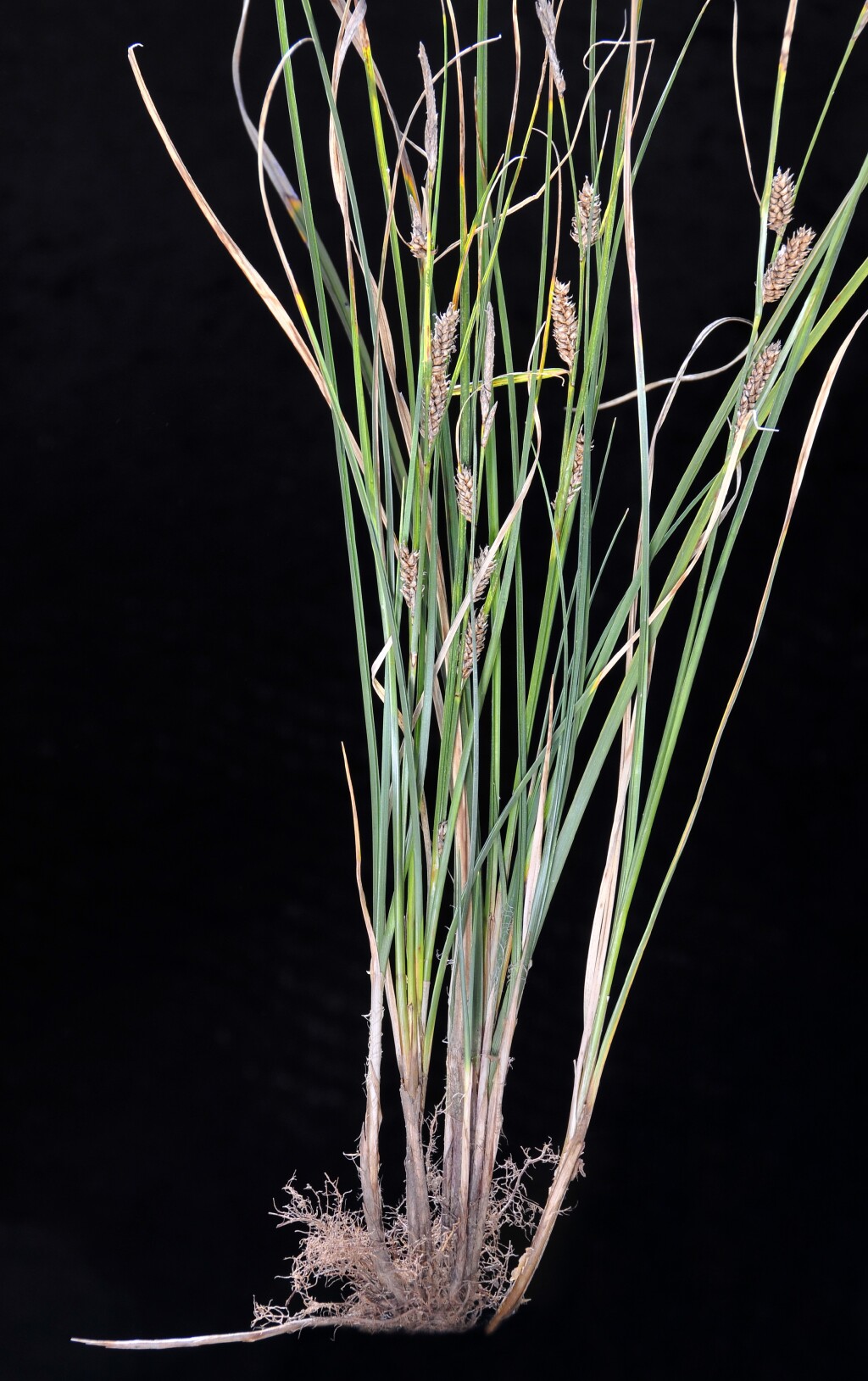Carex bichenoviana
Boott Plains SedgeRhizome long; shoots loosely tufted. Culms erect, trigonous, smooth, 20–40 cm long, 1.0–1.8 mm diam. Leaves exceeding culms, to 60 cm long, 2–8 mm wide, leaf margins usually regularly antrorsely scabrid; sheath fibrous, the front face deteriorating into a network of old veins with a central longitudinal strand and spreading lateral branches at intervals (sometimes termed ladder-fibrillose); dark yellow-brown, occasionally red-tinged sometimes transversely septate; ligule obtuse to truncate or retuse. Inflorescence narrow, erect, often longer than the culm, 6–30 cm long, with few to numerous spikes clustered or solitary at nodes; lowest involucral bracts exceeding inflorescence. Spikes sessile to shortly pedunculate, erect at maturity, 1–5 cm long; upper 2–15 spikes male, ± contiguous; lowest 1–7 spikes entirely female or with male flowers above, ± distant; glumes obtuse to retuse or acute, mostly shortly mucronate, dark to very dark red-brown, with whitish margins near apex; female glumes 3–4 mm long; utricles 4–5 mm long, 2.0–2.5 mm diam., broad-ovoid to ellipsoid, not nerved or with few to many faint (may be more prominent in immature utricles), ± impressed nerves, glabrous, inflated and corky, yellow-brown, usually tinged dark red-brown; beak c. 1 mm long, with apex bifid; style 3-fid. Nut broad-ellipsoid, trigonous, yellow- to red-brown. Flowers spring.
LoM, MuM, Wim, GleP, VVP, VRiv, RobP, MuF, GipP, OtP, Gold, CVU, GGr, DunT, NIS, EGU, WPro, HSF, HNF, OtR. Also SA, NSW, Tas. Naturalised in New Zealand. Scattered, mostly on heavier, seasonally wet soils in the north, occasional in southern and near-coastal sites (but replaced by the similar Carex pumila in truly coastal situations).
Carex bichenoviana is sometimes considered to be the inland counterpart of C. pumila. Both have corky utricles when mature. Carex bichenoviana differs from C. pumila in the rather regular antrorse scabrosities on the leaf margins (C. pumila has irregularly blunt scabrosities on the margins of leaves and bracts), the darker red-brown glumes that are mucronate, more obtuse and often erose. Some plants (e.g. from near Tubbut, Benambra and Ballarat) have a smaller inflorescence and thickened, narrow leaves that are curly towards the apex. Such plants may represent a separate taxon, which has previously been referred to as Carex aff. bichenoviana (Volcanic Lakes), but this entity is treated here as part of a broader concept of Carex bichenoviana pending a detailed study of the species.
Wilson, K.L. (1994). Cyperaceae. In: Walsh, N.G.; Entwisle, T.J., Flora of Victoria Vol. 2, Ferns and Allied Plants, Conifers and Monocotyledons, pp. 238–356. Inkata Press, Melbourne.
 Spinning
Spinning


